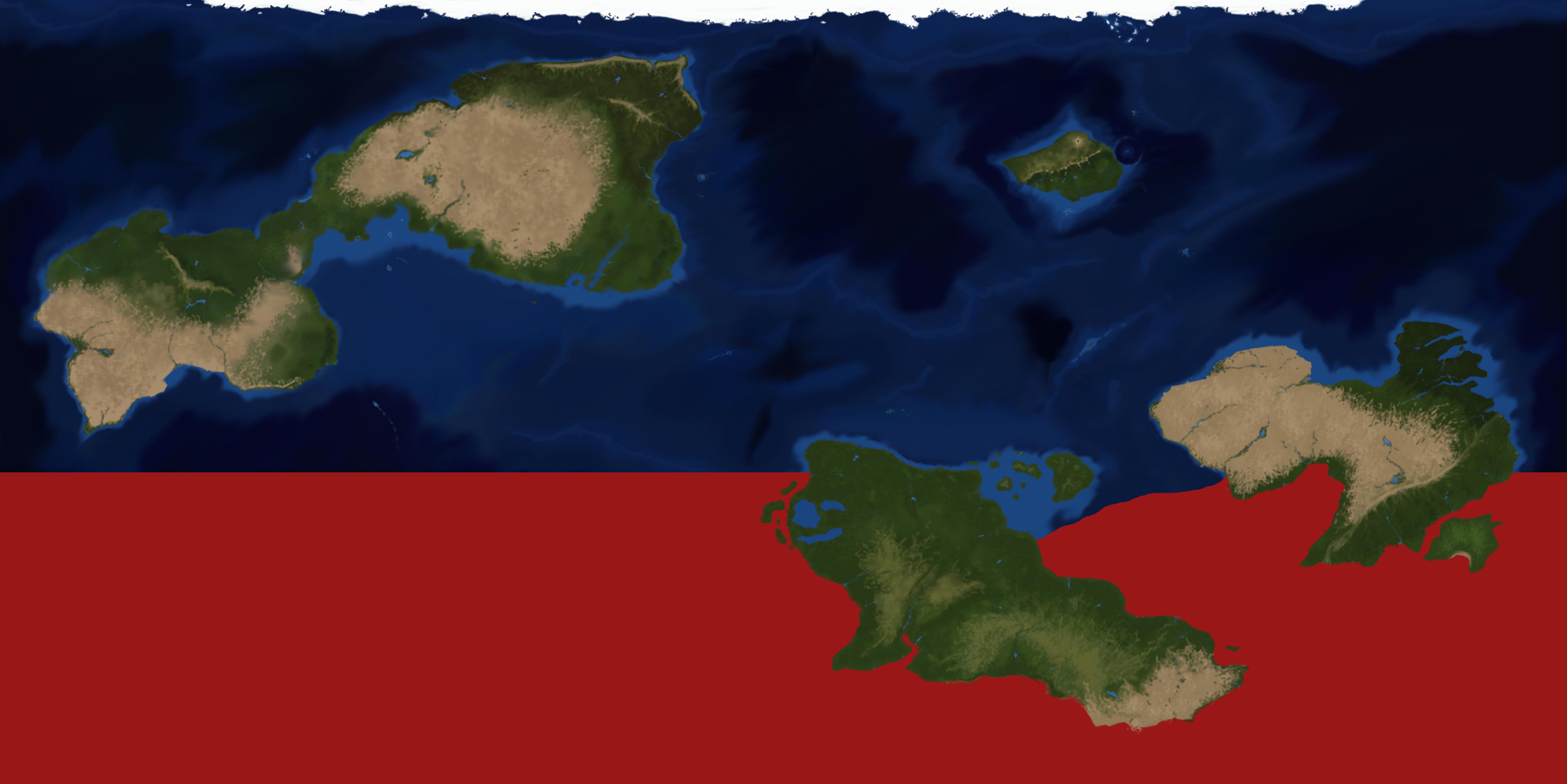Bigeye Spotted Limn
Eoichthys longipinnae is an abyssal amphibian that inhabits the depths of the Nuwadi ocean.
The strong bite mixed with the thin but resistent teeth, make this animal an excellent predator; the teeth, thin and incredibly sharp for their size, work as filetting knives, helping the animal shred the prey into pieces.
As the last living genus in its clade known to science, E. longipinnae is an important piece of the Cladografic puzzle and has helped several times paleontologists and marine biologists reconstruct the history of this particular group on Nijin-Konai in the periods soon after the last megafauna cycle ended, around 32 million years ago.
Basic Information
Anatomy
- Cranium rounded and laterally compressed; teeth Thin and sharp;
- Sphaera lania and lanial palatine underdeveloped.
- Lacrimal, Pre-Postlacrimal plates overdeveloped; cranial armor Thick and developed.
- Natal aculeus persists to adulthood.
- Presence of two Dorsal fins.
- Pectoral fins reduced in size.
- Anal I and II Frontally moved, bringing Anal I into position as a Ventral fin.
- Short tail body with well defined Gill fan ending in a visible caudal drop.
- Caudal fins developed.
Genetics and Reproduction
Polyandric species: one female mates with many males.
In a standard pack of Eoichthys longipinnae there's only one mature female, commonly referred to as the Alpha female, accompanied by two to three males.
The favorite male is commonly known as the Alpha male.
The remainder of the pack is composed by the young, not matured offspring.
The dominant female is the only member of the whole species to enter in and out of heat; the males are in heat all year long, while the other females don't enter heat at all unless they reach the dominant spot in the pack.
The female will cicle through all the mature males composing her group, starting for her favorite, who will have priority over all others.
Every male will fertilize one of the four Egg sacks inside the female duct, with the dominant male fertilizing two/three, filling the vacancies in the group.
The female will incubate the eggs for twelve days, she will lay the eggs on the males and younger specimens.
After another twentyone days the eggs will hatch.
A normal spawn school is of about twenty to thirty hatchlings.
In the first few weeks of life, the hatchlings will compete against eachother for food, eating one another.
At the end of the month the now matured younger members of the pack leave it to fund their own and the now juvenile specimens will take their place.
If the remaining group is over seven members, then the dominant female will choose who to keep and who to drive away from the pack.
Growth Rate & Stages
The newborns are tansparent with eyes as big as the head.
They will grow exponentially in a matter of weeks to a sub adult stage, almost indistinguishable from the adults.
they will reach sexual fertility at 3 years of age.
Ecology and Habitats
Eoichthys longipinnae is a Mesopelagic animal found between depths of 200 and 1000 m.
Dietary Needs and Habits
Eoichthys longipinnae is a pack hunter and will take on prey way bigger than itself.
The dominant female leads the attack; the jouveniles distract the target, while the males will attack the Gill fan, lacerating the tissues and cutting right through the cartilage and bone of the tail, suffocating the prey.
Biological Cycle
This amphibian is periannial with few changes in activity.
Only major decrease in activity for this animal is during the mating season, where the pack members will stay in a resting phase for the whole incubation period, saving energy while the eggs hatch.
Additional Information
Social Structure
A pack of Eoichthys longipinnae is composed by three to seven specimens; one dominant female, two to three mature males and the latest offspring.
The dominant female is recognizable by the brighter lacrimal an pre-postlacrimal plate colors; the favored male being second in the brightness of the plates.
Social interactions between conspecifics are complex with a strict hierarchy.
Uses, Products & Exploitation
Eoichthys longipinnae is seldom found in fishermen's nets; their meat is consumed by many people on various oceanic islands and in coastal cities of the northern New Japan and Terran Union.
Geographic Origin and Distribution
Perception and Sensory Capabilities
Extremely reliant on its sight.
Symbiotic and Parasitic organisms
Affected by several skin parasites and Drinker Worms.
Scientific Name
Eoichthyia ; Eoichthys; E. longipinnae
Lifespan
30 years
Conservation Status
LEAST CONCERN: No measures are in place for this particular animal's conservation.
Population trend: STABLE
Average Weight
4 to 20 kg
Body Tint, Colouring and Marking
Body is grey with darker spots on the back and dorsal fins.
Cranial armor ruddy colored with reddish stripes on both major plates.
The lacrimal plates are yellow; the Pre-Postlacrimals are cyan.
Remove these ads. Join the Worldbuilders Guild












Comments